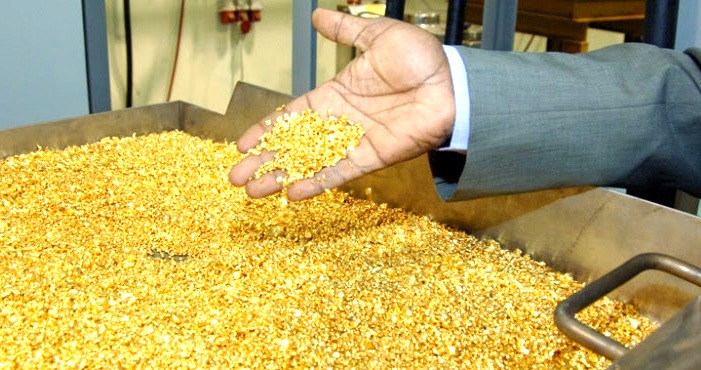All about Gold. Here are some educational facts that you may or may not know about this golden precious metal.
Did you know? Gold will not tarnish, rust, or corrode, and though it’s very strong, it is also the softest and supply of all metals.
Purity – Pure gold is too soft to use by itself in jewelry, so it is combined with a mixture of metals (or alloys) like silver, copper, nickel, and zinc to give it durability and strength.
The amount of alloy combined with the gold that determines the karat weight of gold.
Karatage indicates the purity of the gold or the amount of gold in each piece of jewelry. It noted by a number followed by “k”. Karatage is measured in 24ths. Pure Gold is 24k.
- 24 karat = 100% gold – Too soft for jewelry
- 22 karat = 91.7% gold – 22 parts gold and 2 parts metal alloy – Very soft – not recommended for jewelry
- 18 karat = 75.0% gold – 18 parts gold and 6 parts metal alloy – Recommended for fine jewelry
- 14 karat = 58.3% gold – 14 parts gold and 10 parts metal alloy – Recommended for jewelry
- 12 karat = 50.0% gold – 12 parts gold and 12 parts metal alloy – Not acceptable for jewelry
- 10 karat = 41.7% gold – 10 parts gold and 14 parts metal alloy – The legal karat limit considered as real gold in the United States
Gold Color – In its pure form, gold has a metallic luster with deep yellow in color, but when mixed or alloyed with other metals, such as silver, copper, zinc, nickel, platinum, palladium, etc. then it creates various color hues like white, pink/ rose, green and the seldom found blue, purple and black.
The color of gold is determined by two factors:
- The type of metal alloys included in it
- The percentage of each metal alloy
Yellow Gold – Yellow gold is the most frequently seen and a timeless color. It is usually alloyed with silver and copper. Depending on the karat gold (10K, 14K, 18K or 22K), the color of yellow gold may vary from a softer shimmering yellow to a bright rich yellow. This is due to the varying alloy combinations. The color contrast of yellow gold is most suitable for diamonds and other delicately colored gemstones, as they can appear brilliant and vivid.
White Gold – White gold is harder than yellow gold with a bright lustrous white color. It is most commonly alloyed with a significant percentage of silver or a mixture of other white precious metals. Palladium and nickel are other precious metals which are allowed to create white gold. Due to the presence of nickel in the white gold alloy, it tends to be harder than yellow gold. The percentage of gold naturally varies, according to the quantity of additional precious metal, which is included in the formulation of the alloy. White gold is highly reflective and not subject to tarnish. To enhance the shininess and whiteness, almost all white gold is plated with a rhodium finish, a shiny, white metal which is extremely hard. Depending on the amount of wear, over time this rhodium plating may start to wear off, revealing the original metal color. Re-plating is a simple process that can be done to restore your jewelry’s whiteness if needed.
Pink / Rose Gold – Pink / Rose gold is alloyed with copper, and at times possibly even with silver. The proportions are about three parts of 24-karat gold to one part of copper. These alloys blush and accentuate the gold with a pink hue, which varies in color depending upon the amount of copper blended with the pure gold. The quantity of copper determines whether the gold is pink or more rose colored in tone and highlights.
Green Gold –Pure gold is mixed with silver to get green gold. Although this color is not very popular still it gives the wearer an opportunity to look different.
Other Gold Colors–To get the blue or black colors, iron is alloyed with pure gold whereas to get purple color, pure gold is alloyed with specific percentages of aluminum, tin, and thorium.
Pricing – Gold pricing, in finished jewelry or decorative item, is based on a number of factors, including karatage, gram weight, design, and craftsmanship. The techniques of construction can make a piece more durable and flexible for added comfort and it may increase the gold price for that piece. Gold jewelry is mainly produced by the machine. Any additional hand finishing or textural interest may also raise the cost.
Care – Keep your gold jewelry away from harsh chemicals such as chlorine and cleaning fluids. This will reduce daily abrasions and prolong gold’s luster. To clean gold jewelry, use a solution of warm water and detergent-free soap and wash gold gently with a soft-bristled brush (a dull toothbrush works well). Store gold pieces separately in soft cloth bags or original boxes to protect them from the exposure to harsh daily elements.
Source: https://blog.jewelrywarehouse.com/2014/04/08/all-about-gold/


